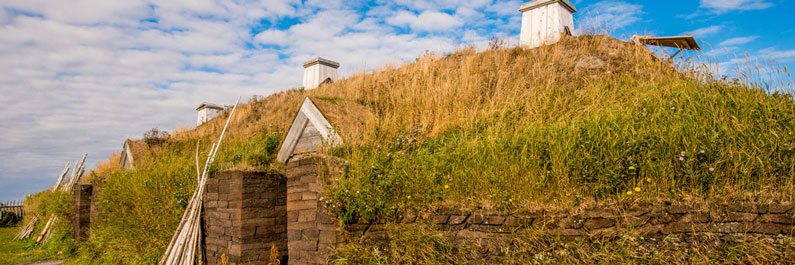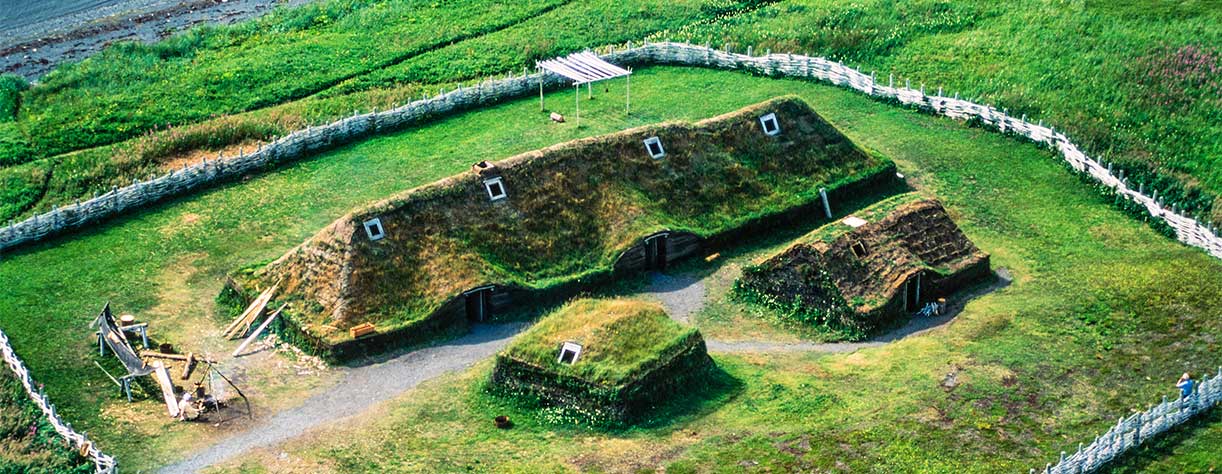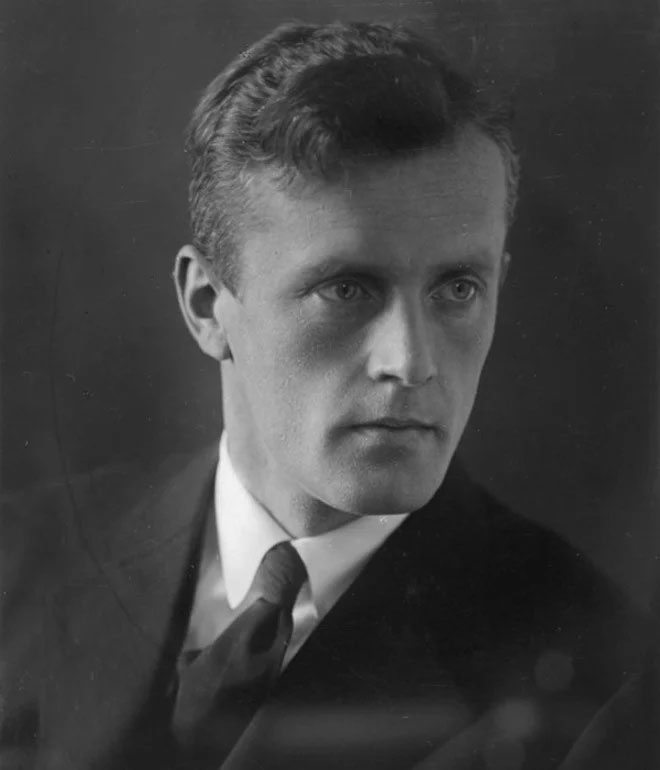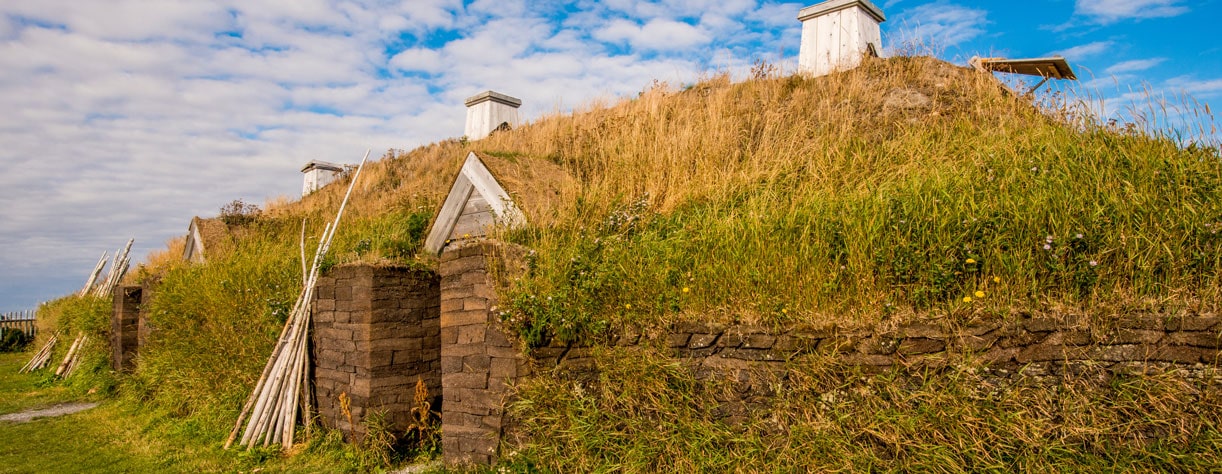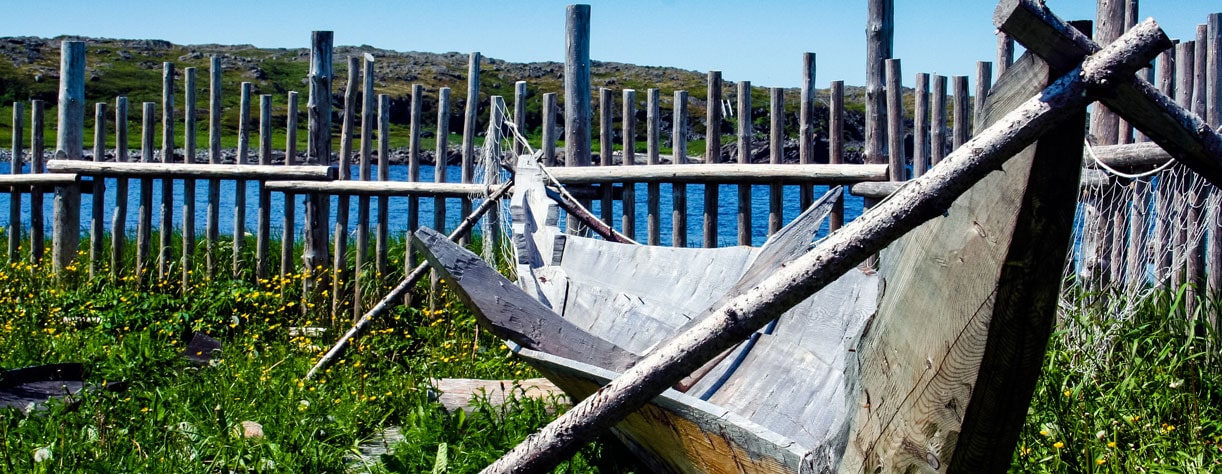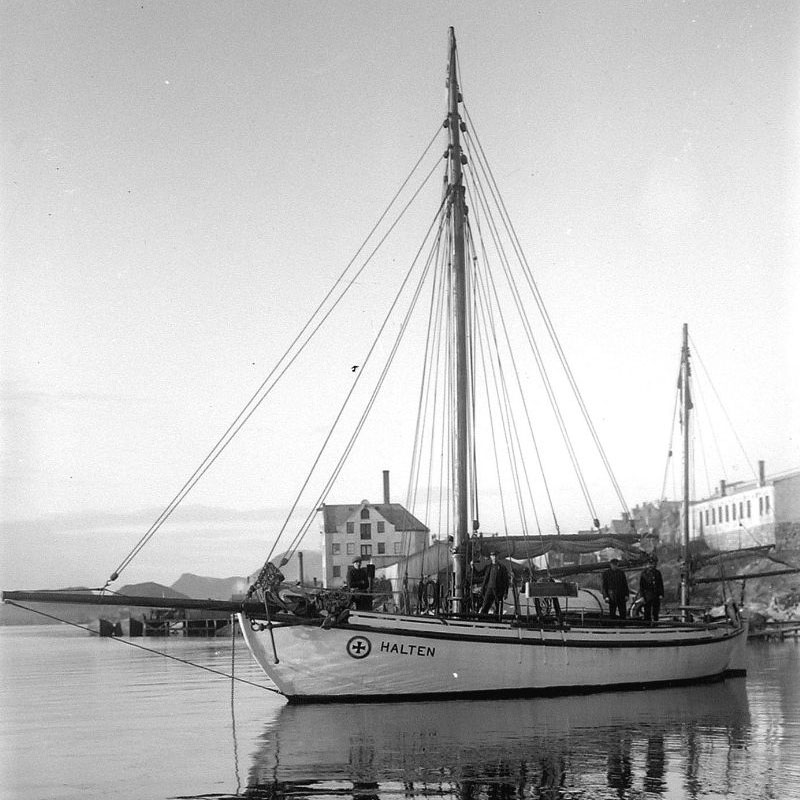What is Vinland?
Known today as Newfoundland, Vinland was a section of North America that was landed on and subsequently explored by Vikings around 1000 AD. Named by Leif Erikson at the time of the first landings the meaning behind the name is subject to multiple interpretations. However one of the more popular theories is that “vin” refers to wine though it is also theorised that “vin” could mean pasture or meadow.
Known today as Newfoundland, Vinland was a section of North America that was landed on and subsequently explored by Vikings around 1000 AD. Named by Leif Erikson at the time of the first landings the meaning behind the name is subject to multiple interpretations. However one of the more popular theories is that “vin” refers to wine though it is also theorised that “vin” could mean pasture or meadow.
What is L’Anse aux Meadows?
L’Anse aux Meadows is an archaeological site located on the northern tip of the island of Newfoundland in Canada. Known as the only confirmed Norse settlement in North America, it holds great historical significance. In the early 1960s, Norwegian husband-and-wife archaeologists, Helge Ingstad and Anne Stine Ingstad, embarked on a quest to search for Viking settlements in North America. Fred. Olsen’s father, Thomas Olsen, and his friend Niels Werring, provided the duo with the boat Halten for their expedition.
The Ingstads
Helge Marcus Ingstad was a Norwegian lawyer and bureaucrat turned huntsman, explorer and archaeologist, is best known for his significant contributions to the understanding of Norse exploration and settlement in North America thanks to his role in uncovering the remains of the Norse settlement at L’Anse aux Meadows.
Born in 1899 in Meråker, Norway, Helge Ingstad developed a passion for exploration and adventure from an early age. He initially pursued a legal career before selling his successful small town law practice in 1926 to settle in Canada's Northwest Territories as a trapper. For the next three years, he travelled with the local indigenous tribe known as the Caribou Eaters. Back in Norway, he wrote the bestselling book Pelsjegerliv ("Trapper Life"), which was published in English as The Land of Feast and Famine.
In the mid-1930s, Helge became acquainted with Anne Stine Moe, a teenager from Lillehammer in Southern Norway nearly 20 years his junior. She had read Pelsjegerliv and became enthralled by his trapper life, writing to him to express her admiration. They started corresponding, eventually becoming engaged and marrying in 1941. The Ingstads settled in Oslo, where they spent their time when they were not exploring the world. Anne had ambitions to become an archaeologist, studying at the University of Oslo in the 1950s whilst working as Helge’s research collaborator.
Helge Ingstad (credit Oslo Museum)
Anne Stine Ingstad (credit Erling Brunborg)
The Quest
Fascinated by the old Norse sagas and tales of a land known as Vinland, the Ingstads had long speculated where it could have been located. It was commonly accepted that Vinland, should such a place exist, had to be located in the south somewhere along the US coast due to the belief that the name was derived from the Norse word for “wine” and “grapevine”.
In 1953, after conferring with linguists, the Ingstads directed their attention further north. Helge believed that the name could have been derived from the Norse word “vin” which meant meadow. Helge meticulously analysed other hints from the sagas, mostly those relating to navigation, and narrowed down the potential area for Vinland to the coast of Newfoundland – plausibly close to the Viking settlements found in Greenland.
The Olsens were keen financial and moral supporters of the Ingstads in their quest to find Vinland. In 1960, Thomas Olsen, father of Fred. Olsen, and his friend Niels Werring, received a request from Helge Ingstad who was in search of a vessel to use during their exploration. The boat Halten was promptly placed at their disposal.
In the spring of 1961, the Ingstads set off on their search aboard Halten from Montreal. Following preliminary investigations in New England and Nova Scotia, they moved on to Newfoundland and worked their way up the coast. Helge’s strategy of talking to locals paid off – the fisherman George Decker led him to a group of overgrown bumps and ridges at L’Anse aux Meadows that looked as if they might be the remains of a settlement – this was just the kind of spot that Helge had envisioned.
The Discovery
Leading experts tended to be sceptical, considering it to be an old indigenous settlement instead. Over the next eight years, Anne led the painstaking archaeological excavation, together with Helge and a team of international archaeologists. The team found remains of a Norse settlement which dated back to around the time the sagas had described.
The results proved indisputable. Carbon analysis and artefacts dated the settlement to the period 990–1050 AD. Building remains emerged, typical of the communities in Norse Greenland and Iceland from the same period. Implements were found for ironworking, carpentry and boat repair, as well as everyday items. The findings of a bronze fastening pin, a bone knitting needle, and part of a spindle indicated that both men and women had been present in the settlement, as related in the sagas.
The settlement became a UNESCO World Heritage Site in 1978, and was also declared a National Historic Site of Canada.
The Halten
The boat used in the exploration by the Ingstads, the Halten, held special significance for the Olsen family. It had been designed by renowned Scottish-Norwegian naval architect and shipbuilder Colin Archer as a rescue boat for the Norwegian Coastguard. Archer was highly regarded for his seaworthy pilot and rescue boats, as well as for larger sailing and polar ships.
The Halten served as a rescue boat from its launch in 1907 until it was taken out of service in 1979, after saving a total of 71 lives. Thomas Olsen’s brother, Rudolf, took over the vessel as a potential means of evacuation in case of a Russian invasion of Norway during the Cold War. He had the Aker shipyard in Oslo equip the boat with a cabin on deck.
In the 1950s, the Halten served the Olsen family in the Canary Islands. With the construction of a new Olsen residence on the island of La Gomera underway, transportation between the large island of Tenerife and the smaller La Gomera proved so insufficient that Thomas Olsen had the Halten moved down to the Canaries to use as a means of transport between the island.
With its cabin on deck the Halten served as a lodging for Fred. Olsen and his crew during the first IOD World Championship Regatta at Hankø in southern Norway in the summer of 1960, which was won by Mr. Olsen himself. In the spring of 1961, it was carried across the Atlantic by the freighter Byklefjord to Montreal, ready for its new role in the Vinland discovery.


